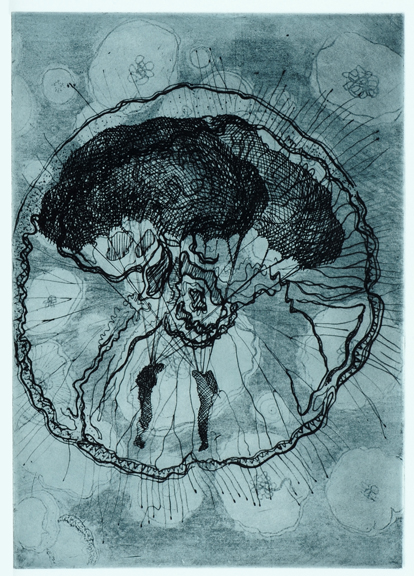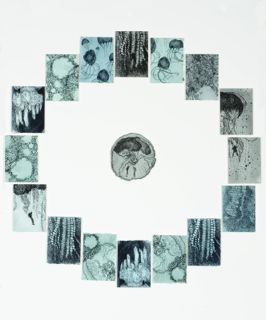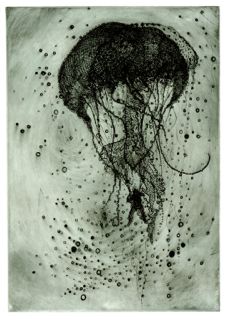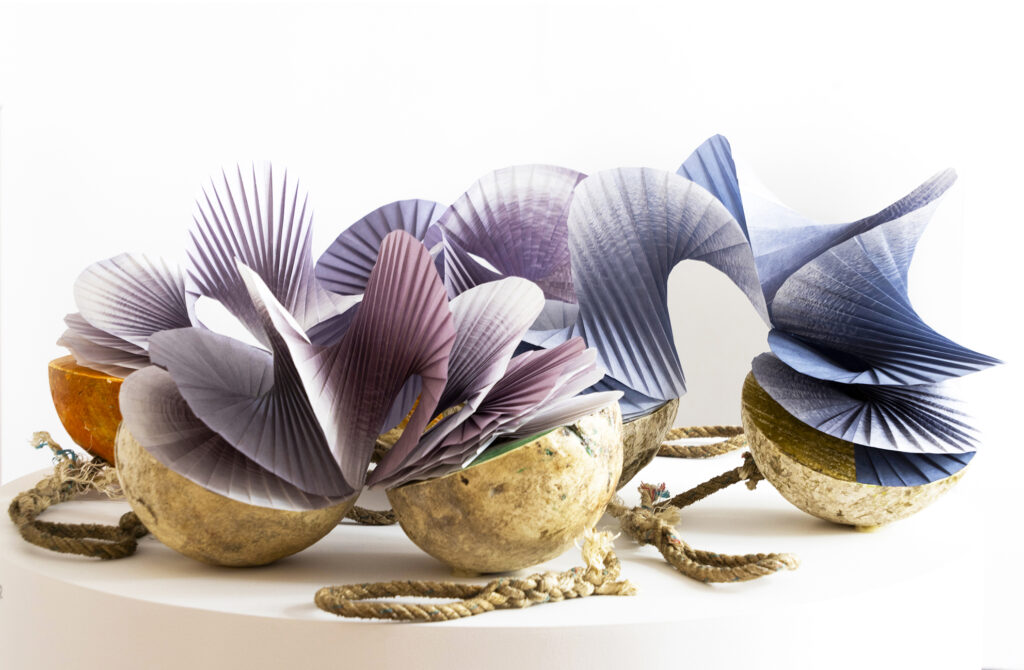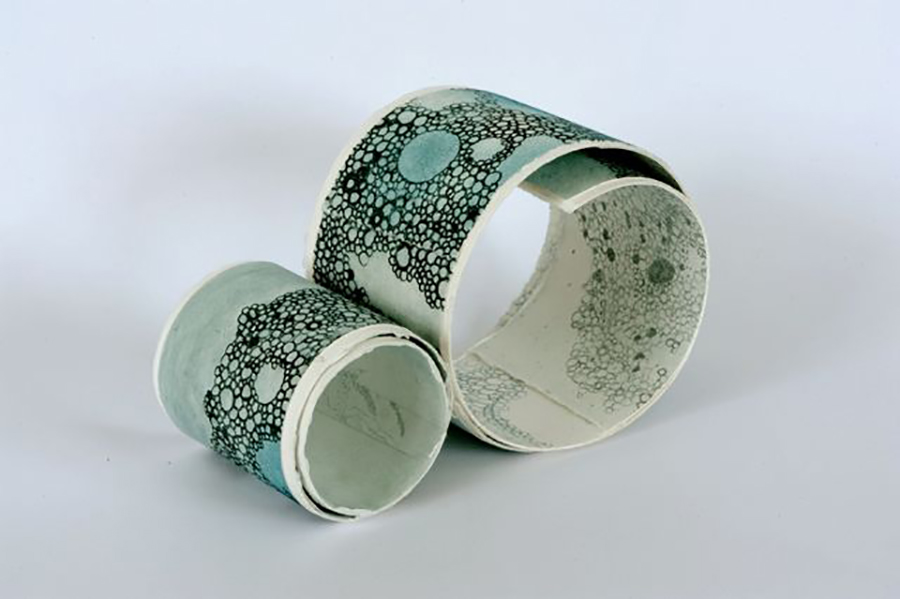
Lisa Sewards:
Thousand kisses deep
Lisa Sewards explores her continuing engagement with parachutes and jellyfish opening at fortyfivedownstairs, 45 Flinders Lane, Melbourne until 17 March.
March 12, 2018
In Interviews,
Printmaking
Imprint: What is the premise for this exhibition and how have you been working towards it?
Lisa Sewards: My imagination was captured many years ago by the parachute object, from its symbolic meanings to its rich associated stories that I have uncovered, in particular during wartime. My first solo exhibition entitled White Parachute was replete with a personal family story that was both romantic and tragic. More recently marine parachutes captured my imagination. An article about the remarkable abundance of transparent ghostly jellyfish that live in the lagoons of the Chuuk Atoll, the location of Truk Lagoon in Micronesia, and the resting place for hundreds of sunken vessels, aircrafts and their ghosts, instigated my research.
Imprint: What did your research about Truk Lagoon involve?
Lisa Sewards: Initially the medusozoa image in that particular article captured my interest as in my mind it had a visual lineage to parachutes. A military attack, Operation Hailstone, on Japan’s naval stronghold in the central Pacific during WW2, transformed Truk Lagoon into a macabre and haunting graveyard. Over time nature has healed and hidden the scars of this event and today this watery grave is a time capsule within a peaceful flourishing marine ecosystem.
Research material included historical books, newspaper articles, visiting aquariums, and snorkelling in the pacific at a sunken ship location. A key resource was my communication with a resident islander on Truk Lagoon. Via social media I posted a general callout to anyone connected to this event. Six months later one resident of the Chuuk Islands made contact and shared her Grandmother’s stories. Her Great Grandfather died in the battle of Operation Hailstone as local islanders were forced to work on the ships and many lost their lives.
I was also fortunate to source small US military pilot release parachutes from the estate of an American airforce serviceman. These have provided me with an integral physical item enabling me to develop my imaginary “parajellys”.
Imprint: How was the work developed technically and what were some of the challenges involved?
Lisa Sewards: My challenge was not to create a historical body of work but rather a body of work that was inspired by the events and location of Truk Lagoon. Suites of drawings were transformed into etchings using photopolymer intaglio solar plates. To master rich evenly etched solar plates from ones original drawings is very different to the acid based process with zinc and copper plates. The process is relatively non-toxic however almost scientific and requires time to technically achieve successful results. My intention was to create a large scaled work on paper for one entire gallery wall depicting ‘fractured lagoons’. This was technically challenging with the constraints of my printing press size and the challenges that working with large sized solar plates present. Ultimately individual A2 etchings were achieved (two of these original etchings are framed and in the exhibition). The next steps included scanning, and with the assistance of printer Gary Upton six large scaled archival pigment prints were printed on cotton rag papers A1 in size. The final result, “The fractured lagoons I-VI’ for one entire wall at fortyfivedownstairs.
One special personal challenge I set myself was to create a small etching that would appropriately honour the Great Grandfather of my kind provident. All male elders in her islands are known as ‘Papa’ and my work entitled the same will soon be gifted and make its journey to Truk Lagoon.
Imprint: There are several paintings in this exhibition – what is the relationship between your print work and painting?
Lisa Sewards: I am a Printmaker who paints and for Thousand kisses deep developed a suite of oil paintings to pair with groups of etchings. In each arrangement the connections of the paintings are through their aspect, imaginary and palette. The contrast of the two mediums allowed me to grow and develop moving from the process driven printmaking discipline through to the freedom and fluidity in painting.
Imprint: What future projects are you working on?
Lisa Sewards: The parachute object has been pivotal in my previous bodies of work and will continue to be central moving forward. I intend to develop a new work for Print Council of Australia’s upcoming biannual print exchange 2018. Soon thereafter I will begin the process of searching for the next story to research and develop which excites me!
I am honoured that Tacit Galleries have invited me as their feature artist for Editions 2019 and as a result a small survey of previous works will be included, along with a new suite of prints to be developed this year.
In the long term I have a plan to return to the personal family story and walk in my mothers footsteps as a child: from Belarus to Berlin. The parachute will be fundamental in this journey and I am excited by what connections and stories the project will in time unveil.
Thousand kisses deep is at fortyfivedownstairs, 45 Flinders Lane, Melbourne until 17 March.

